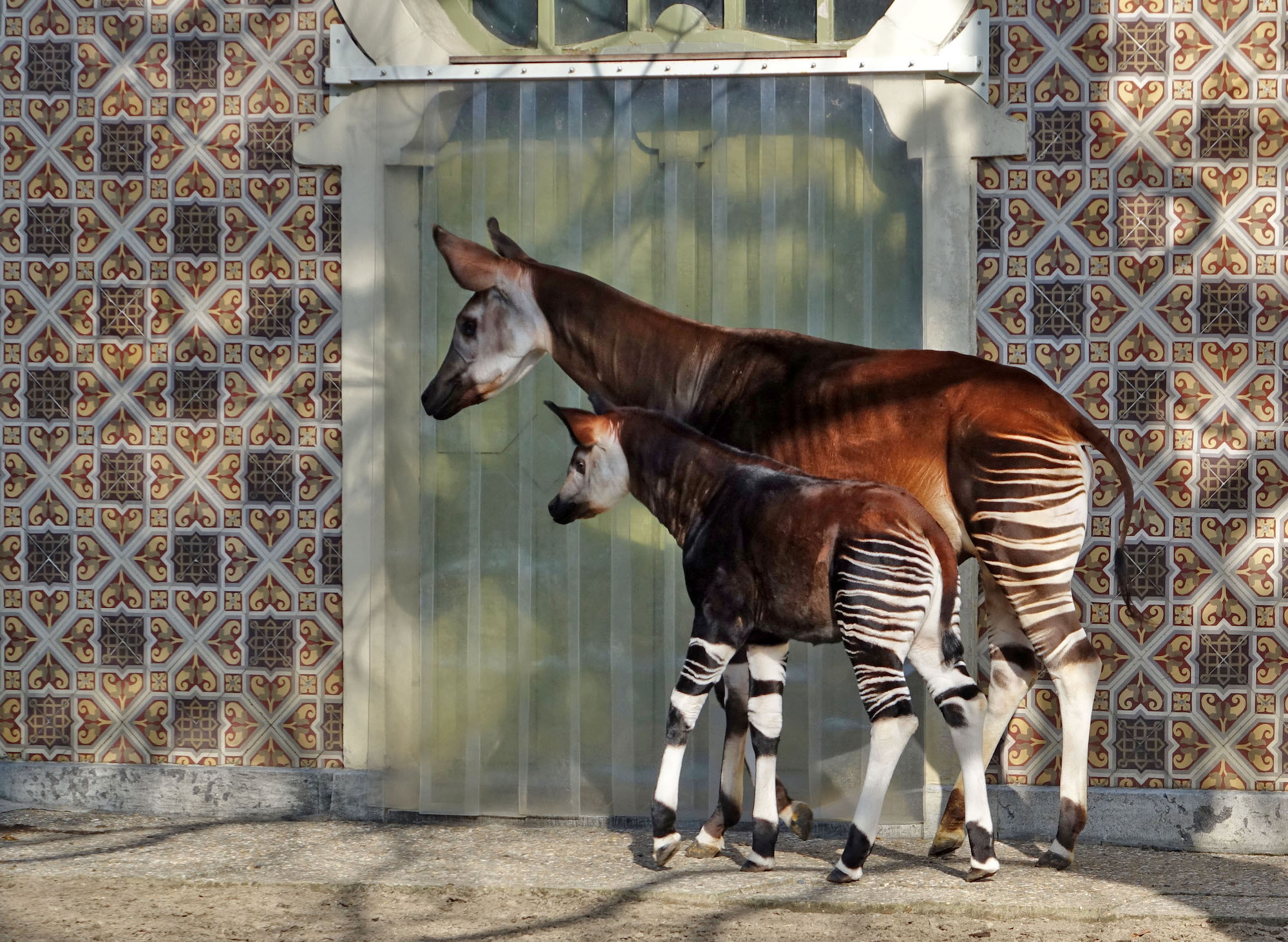 Evolution & Behaviour
Evolution & Behaviour
New fossil giraffe helps unravel the evolution of this iconic family
A new fossil giraffid species has been discovered in Madrid, shedding light on how this iconic family evolved.

Despite everyone thinking of a giraffe's long neck as its distinguishing feature its family members are defined by two characteristics unrelated to necks: they all have double-lobed canine teeth (like a boxing glove), and ossicones, a special type of bony outcroppings covered by hair on the top of their heads.
Today, there are only two living members of the giraffid family: the modern giraffe, which inhabits the sub-Saharan African savanna areas, and which has the long neck that has motivated so many debates in the history of evolution, and the okapi, the elusive short-necked giraffe that has zebra-striped back legs and lives hidden in the rainforests of central Africa (Congo DR) and which was only discovered back in 1901.
However, there have been about 40 giraffid species over time, ranging from the Indian subcontinent and China to the Mediterranean coast since they first appeared 23 million years ago, probably in what is now Pakistan and India. The greatest diversity was found on the Greek Island of Samos, near Turkey, where there were probably eight to nine different species at the same time.
Despite being remarkable, the fossil remains of giraffids and scarce and complete skeletons and skulls are rarely found, making the study of this family very hard. This is why its evolution (phylogeny) had never been studied in depth before and there were a lot of gaps in what we knew about how giraffes came to be.
The exceptional remains of 17 giraffid fossil specimens come from the fossil site Batallones-10 and are approximately 9 million years old. The site where the fossil was found, Cerro de los Batallones (Batallones butte), is about an hour south of Madrid's city center and was first discovered in 1991. The finds in the clay-like soil have included a rich collection of carnivores, including big cats and bears, as well as giant tortoises, rhinoceroses, and a giant elephant-like creature. The giraffe fossils were first found in 2007.
Decennatherium rex was a medium to large giraffid, with a medium length neck (not elongated as the modern giraffe). It could reach almost 3 meters tall in the case of the larger males and almost 2 tons of weight, being larger than an okapi but smaller than a modern giraffe.
D. rex had two sets of ossicones on its head, with the back pair larger than the front, rather than the single set of two small to medium ossicones modern giraffes have. The larger posterior set of D. rex could reach 40 cm in the case of large males and was ornamented with longitudinal ridges and bony bumps. Female ossicones were half the length and were more slender. Ossicones could have evolved to help males compete with one another for female attention, by the means of court display or competing for a territory by sparring with other males, but they also could be for thermoregulation.
The exceptionality of these remains comes not only for the near-perfect condition in which they have been preserved, being something most paleontologists dream of and very rarely find, but from the extensive information they have been able to give on the evolution of a family which is poorly known. We have been able not only to describe a new species, but to fill a lot of gaps on the information that we have, and build the largest and more complete family tree made for the giraffes so far, using new analytical methods at our reach. The new tree puts giraffes and okapis relatively far away from each other evolutionarily, adding to the understanding of these animals and their relationships, and finding out that the two giraffids we find today are relics preserved from a past time of two very distinct groups of giraffes that were morphologically very different.
The new family tree is the first step to unravel where giraffes really come from and this breathtaking discovery will ultimately help us understand the demise of a family currently facing extinction, and how to help on its conservation before is too late.
Original Article:
M. Rios, I. M. Sanchez, J. Morales, A new giraffid (Mammalia, Ruminantia, Pecora) from the late Miocene of Spain, and the evolution of the sivathere-samothere lineage. PLoS One 12, e0185378 (2017)Next read: A new code for a new life by Jordan Costafrolaz
Edited by:
Massimo Caine , Founder and Director
We thought you might like
The flesh-eating Venus flytrap plant generates its own magnetic fields
Oct 19, 2022 in Plant Biology | 4 min read by Anne Fabricant , Sönke Scherzer , Dmitry BudkerHow many factors of global change affect soils
Sep 7, 2020 in Earth & Space | 3.5 min read by Matthias RilligHow nanosized shrapnel from exploding fungal cells may impact us: from allergies to cloud formation
Nov 5, 2020 in Microbiology | 3.5 min read by Michael J. LawlerWhat could improve our children’s mathematics and science abilities?
Sep 6, 2019 in Psychology | 3 min read by Jean GoldingMore from Evolution & Behaviour
Cicada emergence alters forest food webs
Jan 31, 2025 in Evolution & Behaviour | 3.5 min read by Martha Weiss , John LillSize does not matter: direct estimations of mutation rates in baleen whales
Jan 29, 2025 in Evolution & Behaviour | 4 min read by Marcos Suárez-MenéndezThe Claws and the Spear: New Evidence of Neanderthal-Cave Lion Interactions
Jan 22, 2025 in Evolution & Behaviour | 3.5 min read by Gabriele RussoA deep-sea spa: the key to the pearl octopus’ success
Jan 20, 2025 in Evolution & Behaviour | 3.5 min read by Jim BarryFeisty fish and birds with attitude: Why does evolution not lead to identical individuals?
Aug 31, 2024 in Evolution & Behaviour | 3 min read by Lukas Eigentler , Klaus Reinhold , David KikuchiEditor's picks
Trending now
Popular topics


